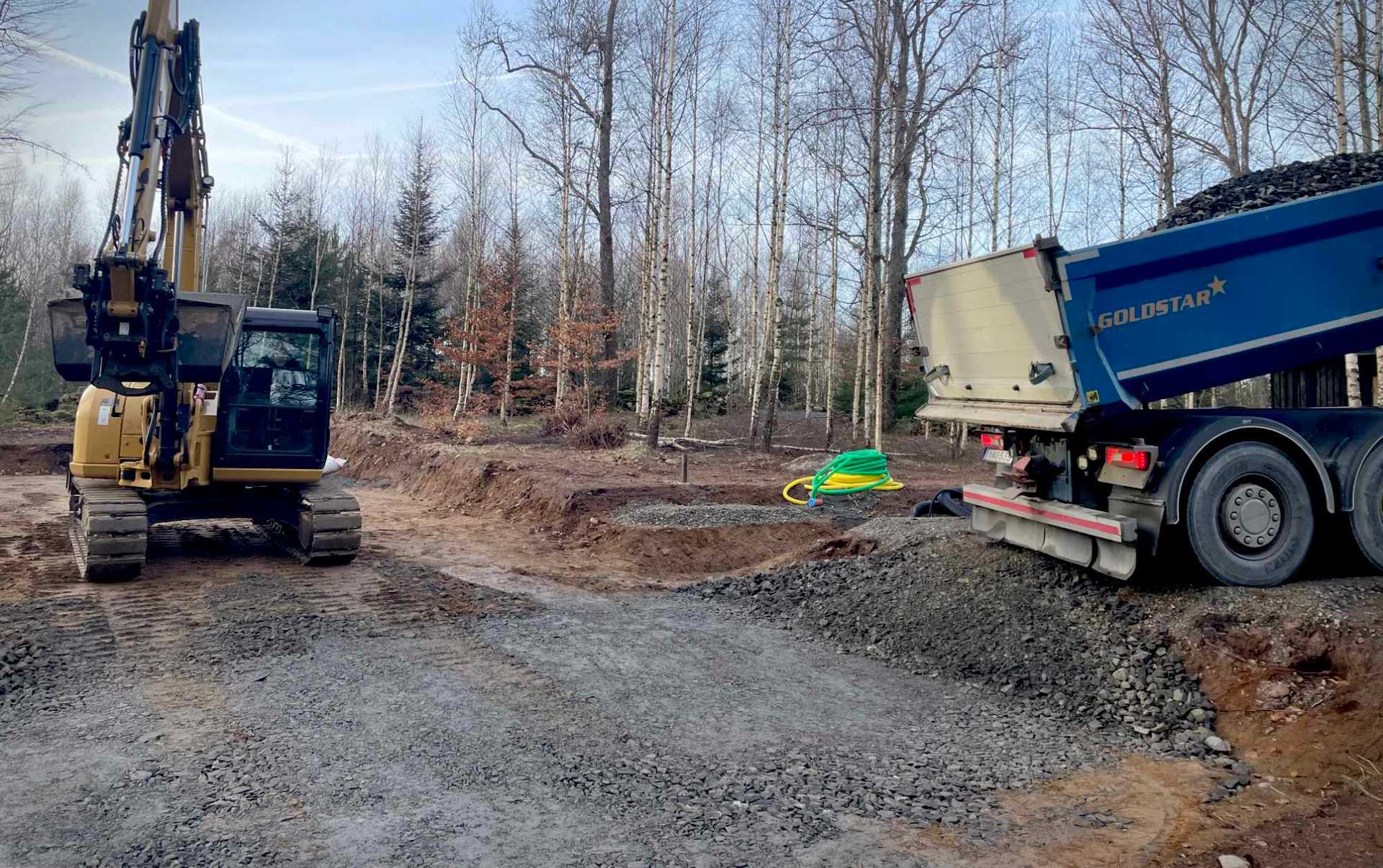Over the past couple of months, the weather has made work progress slower than expected. A colder than usual winter in southern Sweden made it hard to dig (or very expensive), so we just had to accept the situation and wait for better weather.
Clearing the land
In preparation to reach the future construction site and make it easier to bring in machines and material, we started with clearing out trees and made the ground hard for large trucks to drive on. This work took a couple of days, and we established a small road from the main parking area to the new house. This road is temporary and will be removed once the house is finished.
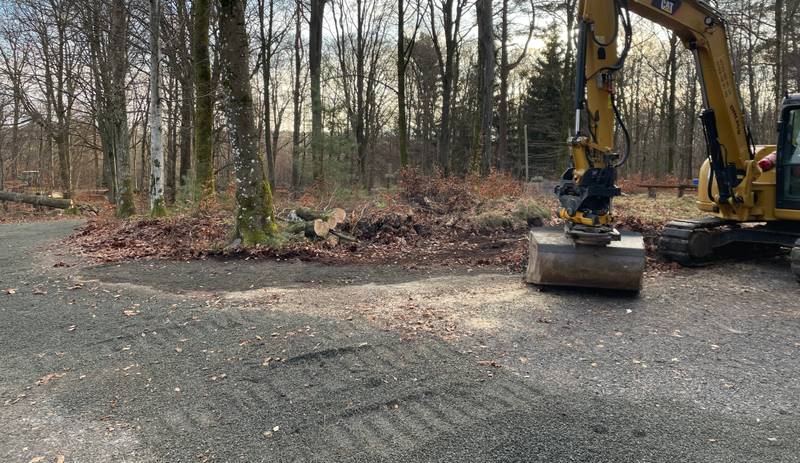 A few trees had to be taken down to allow taller trucks to pass through to the new house easily.
A few trees had to be taken down to allow taller trucks to pass through to the new house easily.
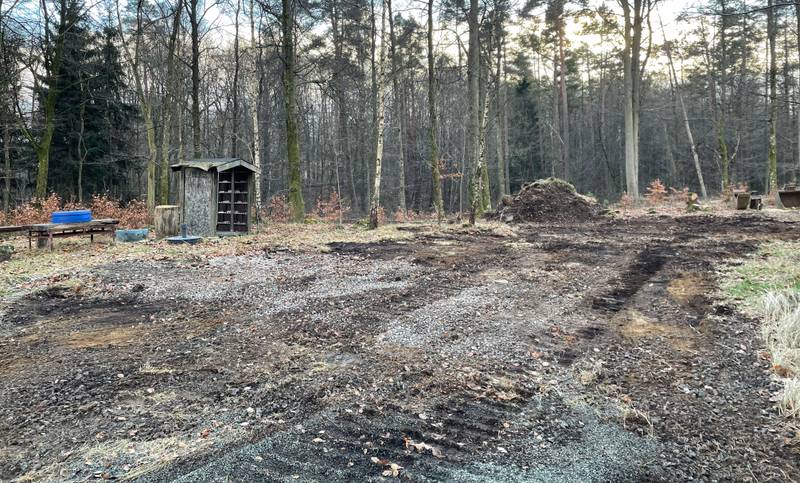 Clearing the land from small trees preparing for the temporary road that will be filled with gravel.
Clearing the land from small trees preparing for the temporary road that will be filled with gravel.
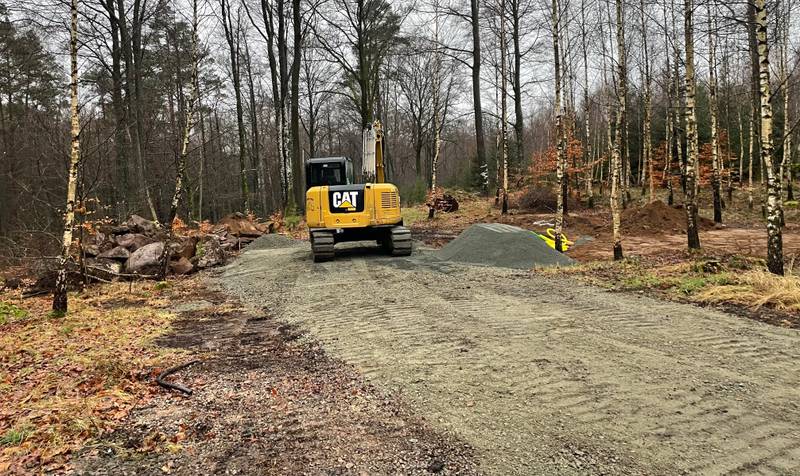 The temporary road in place with the proper gravel to support heavier vehicles.
The temporary road in place with the proper gravel to support heavier vehicles.
Pipes between the two houses
From the start of building on this piece of land, our thinking was that we’d place all utilities (heating, water, electricity, internet, etc.) in the workshop and then connect it underground with the main house. This allowed us to not have any bulky “machines” in the main house, making it as silent as possible, and any future maintenance work would be done from the workshop. With all these utilities in place and working in the workshop, we needed to connect all of them to the new house. So, digging down a lot of pipes between the houses was needed.
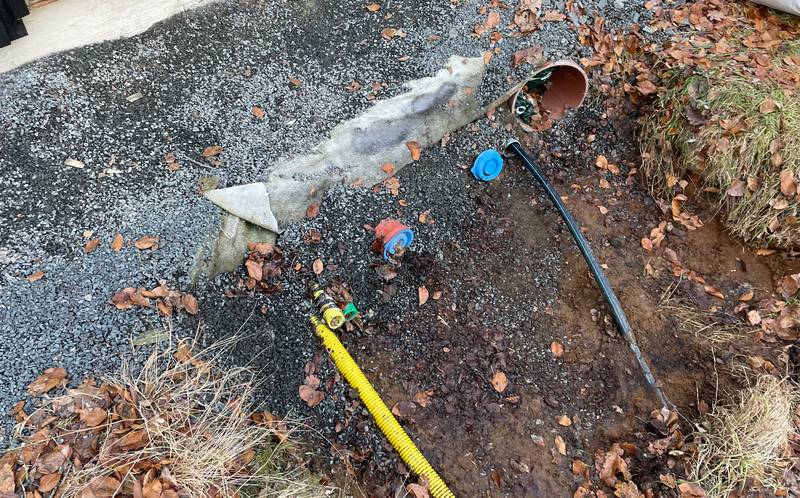 All pipes coming from the workshop. From left to right: electricity, network, main sewage pipe, incoming water, and finally, the large brown pipe will hold the hot water pipes to the new house.
All pipes coming from the workshop. From left to right: electricity, network, main sewage pipe, incoming water, and finally, the large brown pipe will hold the hot water pipes to the new house.
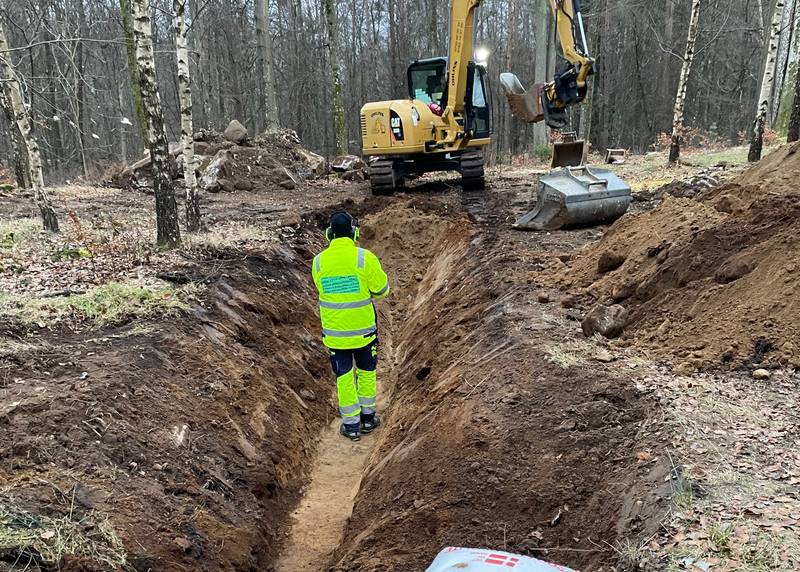 Main water line and hot water pipes are dug down at least 1 meter deep.
Main water line and hot water pipes are dug down at least 1 meter deep.
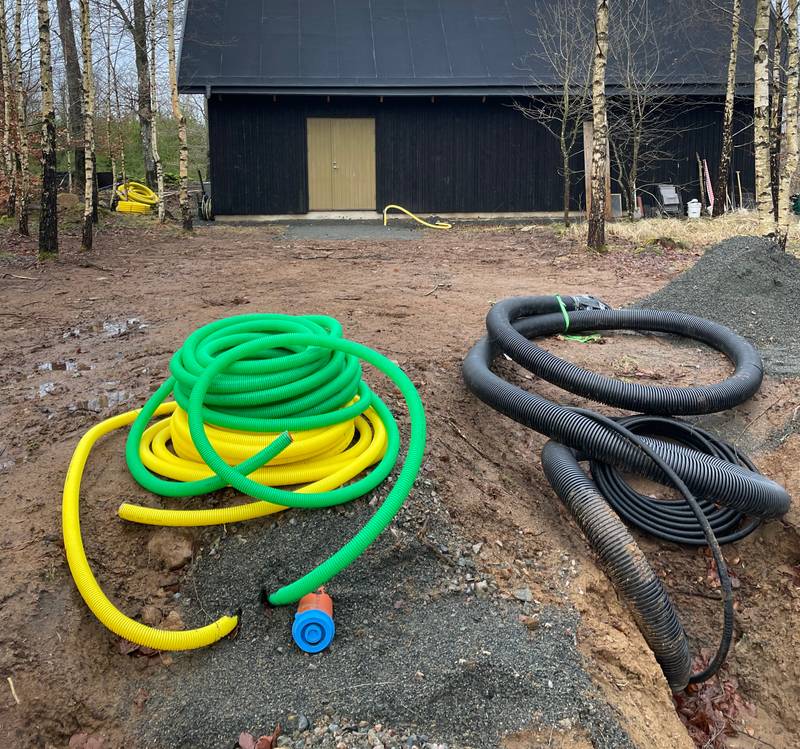 View towards the house with the new pipes in the ground. A few meters more, and it’ll be connected to the main house.
View towards the house with the new pipes in the ground. A few meters more, and it’ll be connected to the main house.
Removing all organic material
The place where we plan to build the main house isn’t very level. The ground differs about 1.5 meters between its highest point and the lowest, so we’ll need to fill up with a lot of material to get a level ground to place the house on. Step 1 in this process is always removing all organic material until you reach good, untouched solid ground that you can then start to build up from.
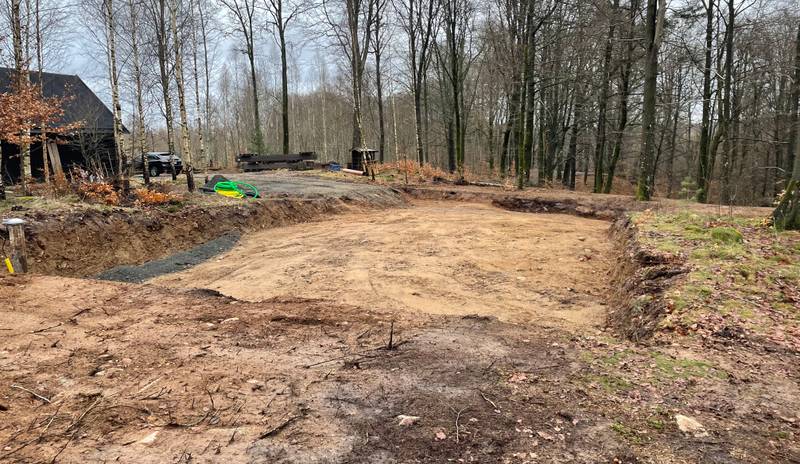 The dug-out hole ready to be filled with rocks. The hole is about 2 meters wider on all sides compared to the finished foundation.
The dug-out hole ready to be filled with rocks. The hole is about 2 meters wider on all sides compared to the finished foundation.
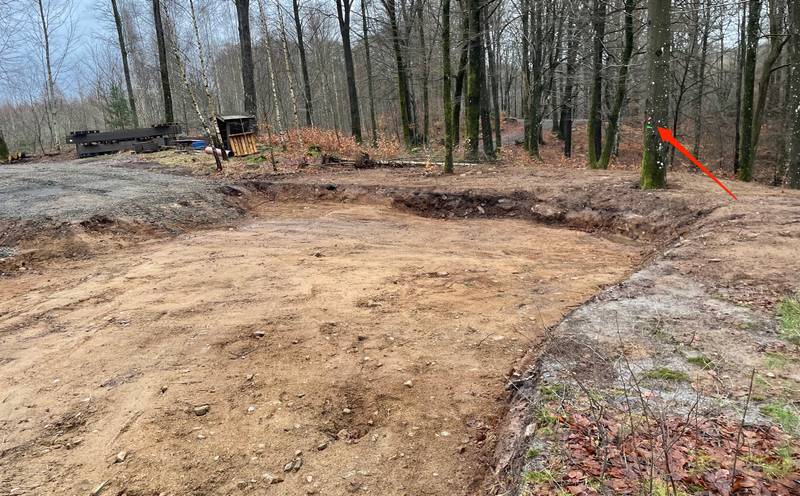 The red arrows point towards a small green marking on the trunk of the tree. This shows the height of the finished floor. A lot to fill up!
The red arrows point towards a small green marking on the trunk of the tree. This shows the height of the finished floor. A lot to fill up!
Filling up and compacting
Once the weather was fine, we could start with actually filling up the large hole we’ve just dug. The first rock/gravel mix we got was between 0 and 90 millimeters in size. When compacted with a large 500kg compactor, this becomes a rock-solid foundation to build a house on.
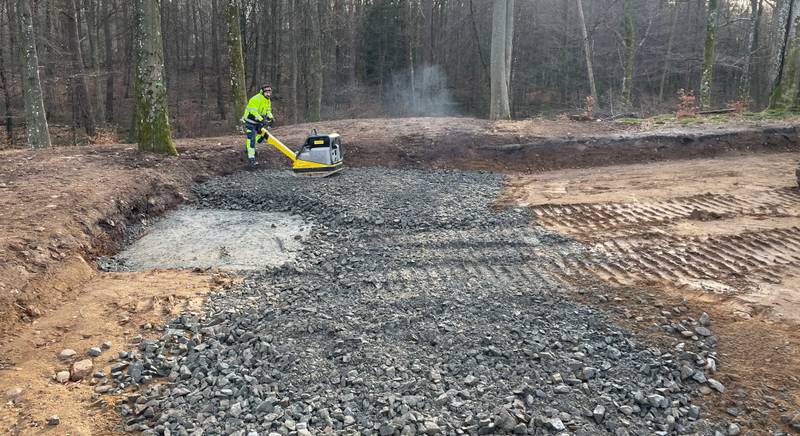 The ground was built up one layer at a time to be able to properly compact it.
The ground was built up one layer at a time to be able to properly compact it.
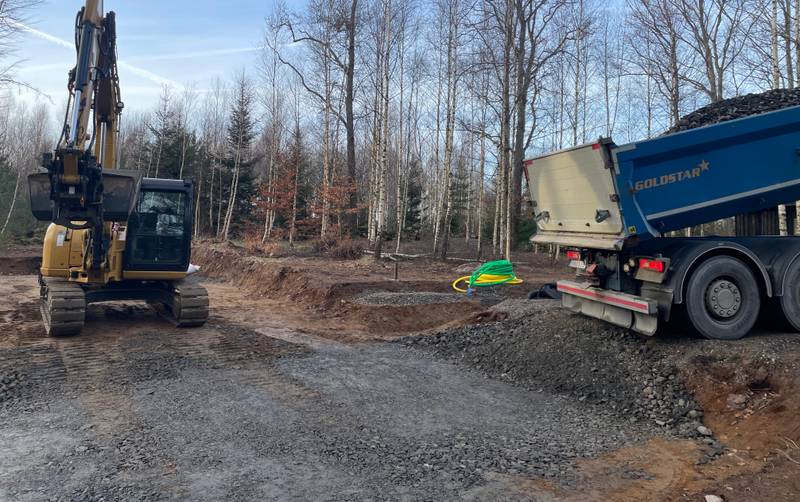 The temporary road we built worked very well with the heavy trucks hauling the crushed rock material we used.
The temporary road we built worked very well with the heavy trucks hauling the crushed rock material we used.
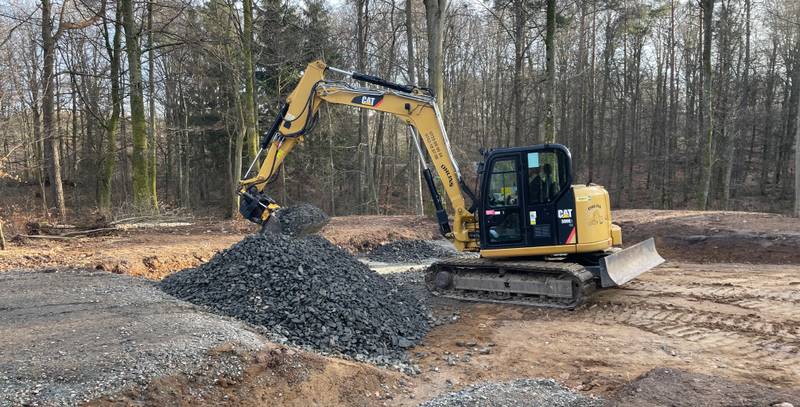 A pile of rocks from a single truckload. Each load was about 18 tonnes, 18,000 kg, or about 8-9 cubic meters.
A pile of rocks from a single truckload. Each load was about 18 tonnes, 18,000 kg, or about 8-9 cubic meters.
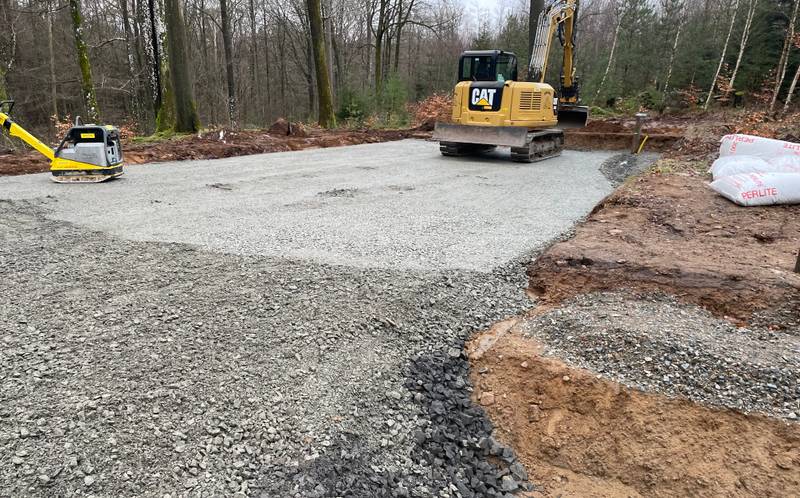 Eventually, you work through the layers and end up with a nice flat solid ground.
Eventually, you work through the layers and end up with a nice flat solid ground.
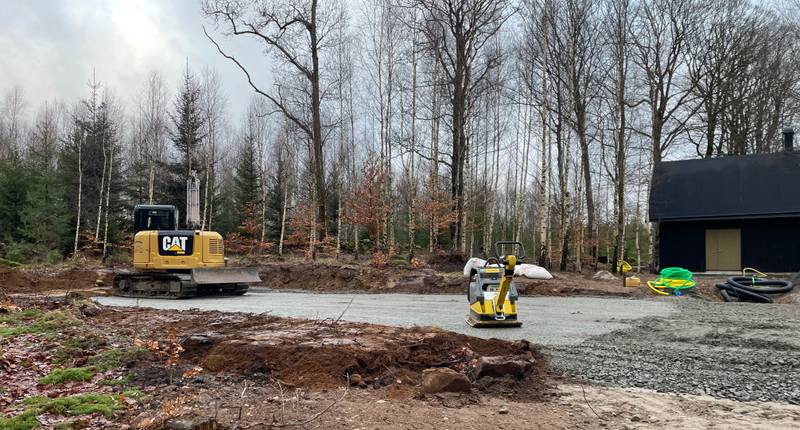 It looks pretty level from here!
It looks pretty level from here!
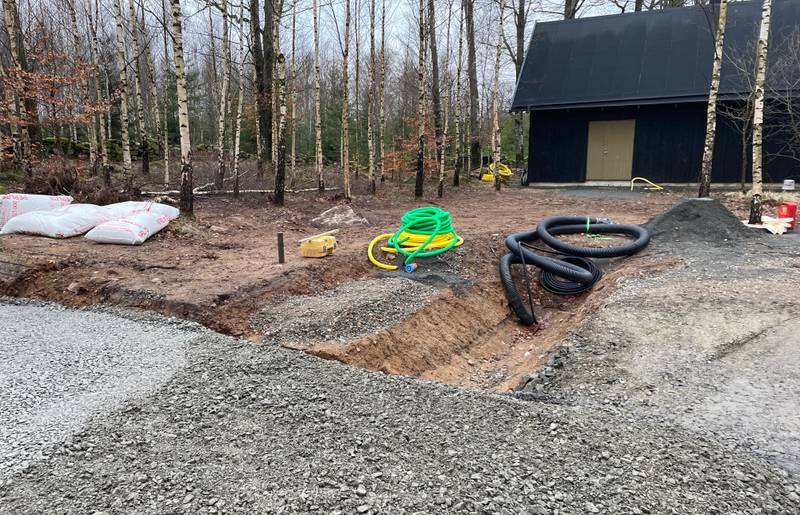 The pipes were left outside the foundation until all the main rock material was in place.
The pipes were left outside the foundation until all the main rock material was in place.
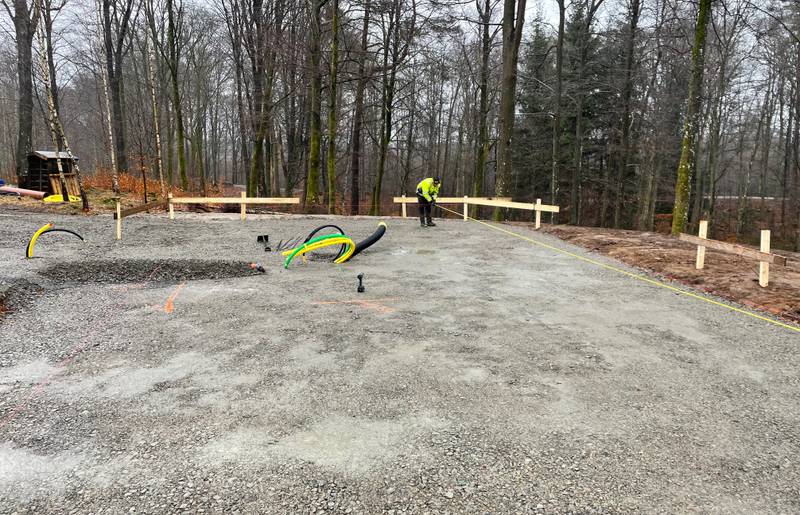 With the largest rock material in place and compacted, we dug up a trench for the pipes to then be placed in the right place to come up in the future house.
With the largest rock material in place and compacted, we dug up a trench for the pipes to then be placed in the right place to come up in the future house.
All in all, so far, all work had gone great. While not the easiest time to work (during winter), the end result was really good, and we should have a really solid foundation to build the house on. It was a lot of work and took about 2 weeks in total. We had about 20-25 trucks full of the larger rock delivered, totaling almost 400 tonnes of material.
Winter hit us, again
We were on a roll and were planning to pour the concrete in the middle of February when the cold weather hit us again. We did only minor work before stopping. We’ll continue again once the weather is better.
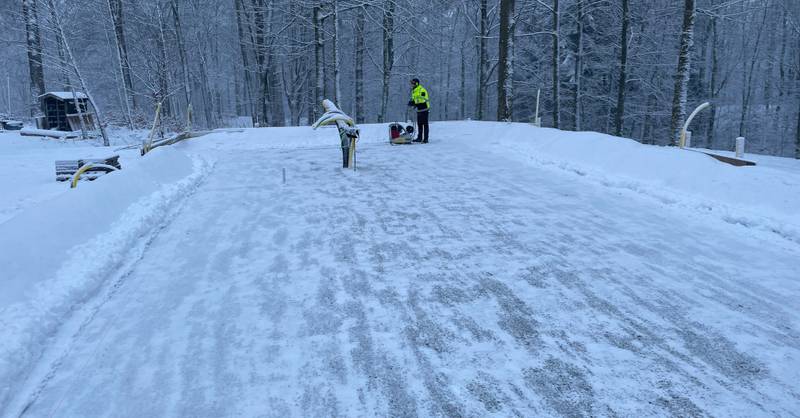 All pipes in place. Ground leveled off with a last layer of finer gravel ready for the concrete side blocks that’ll hold the insulation and concrete slab in place.
All pipes in place. Ground leveled off with a last layer of finer gravel ready for the concrete side blocks that’ll hold the insulation and concrete slab in place.
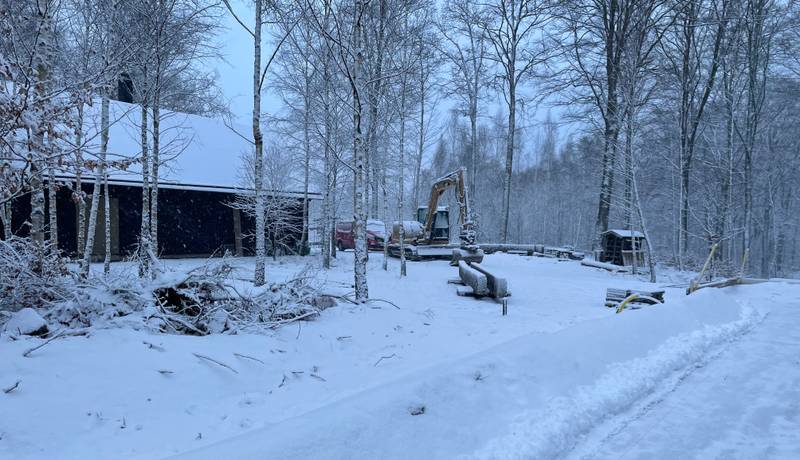 February 2024 and winter is back!
February 2024 and winter is back!
